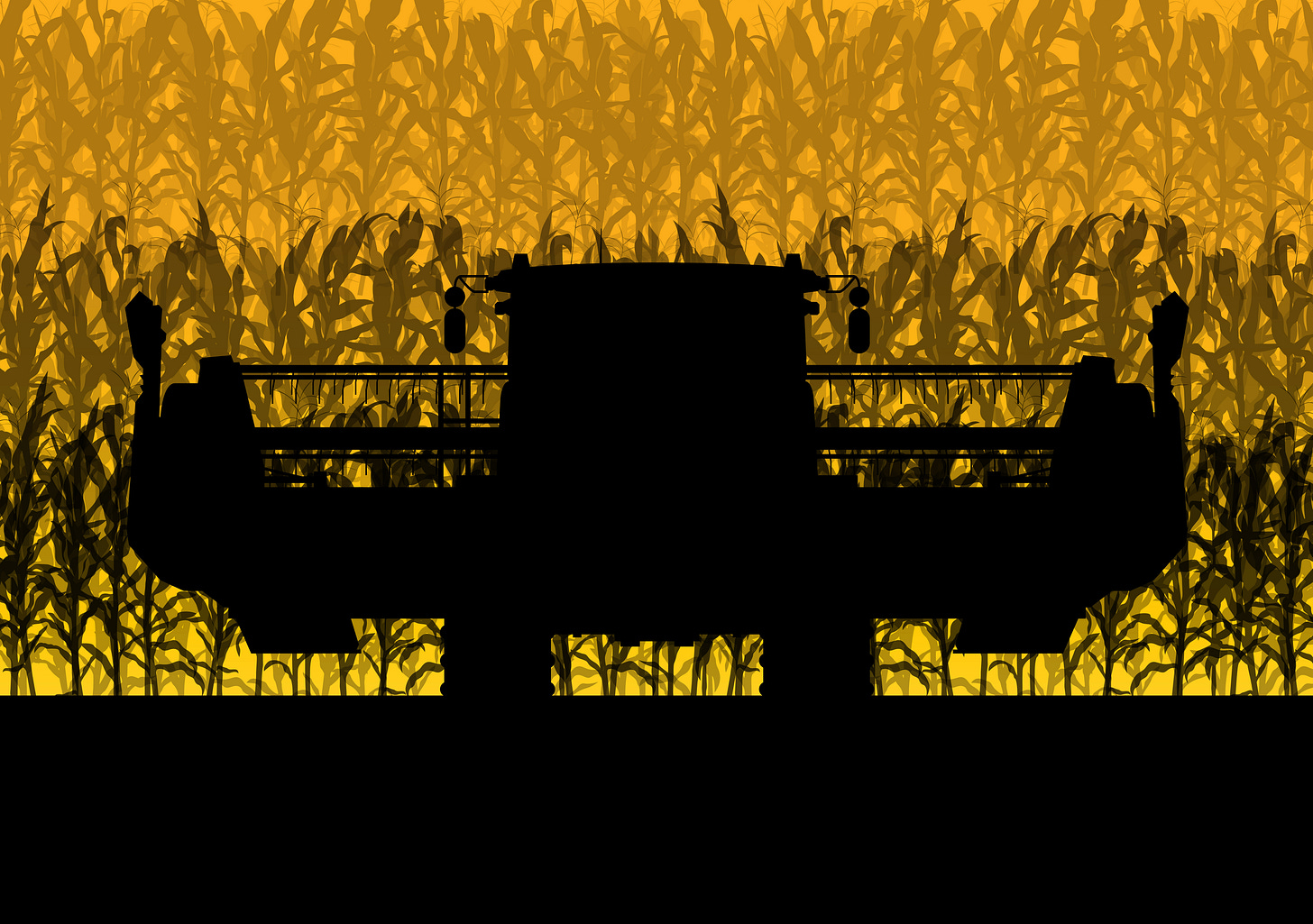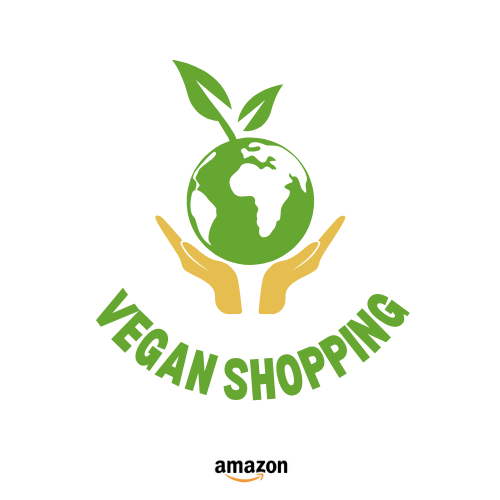
One argument often raised against veganism is the claim that crop harvesting leads to animal deaths. Critics assert that the cultivation of crops, especially on a large scale, results in the unintentional killing of small animals such as rodents, insects, and other wildlife. These deaths can occur due to mechanical harvesting equipment, pesticides, and habitat disruption. While it's true that current non-vegan farming practices result in unintended harm to animals, this observation does not justify continuing or expanding animal agriculture. Rather, it serves as a compelling reason to advocate for a shift towards more ethical and sustainable agricultural practices.
‘‘Many small animals, including insects, are killed in the production and harvesting of corn. Notably, most of the corn grown in the United States is used for purposes other than human food, such as livestock feed, biofuel production, and industrial products.’’
By focusing on sustainable farming methods, we can significantly reduce the collateral damage to wildlife associated with crop production. Practices such as no-till farming, integrated pest management, and the use of cover crops can help mitigate harm to small animals and improve the overall health of the ecosystem. No-till farming, for instance, minimizes soil disruption, thereby preserving the habitats of many small creatures. Integrated pest management reduces reliance on chemical pesticides by using natural predators and other biological controls to manage pest populations. Cover crops protect the soil and provide habitats for various species, fostering biodiversity.
This article looks into the misconception that vegans cause more animal deaths through crop harvesting. It examines the broader impacts of the livestock industry, highlights the ethical and environmental benefits of plant-based diets, and advocates for sustainable agricultural practices to minimize harm to animals.
The Vegan Ethos: Minimizing Harm
The essence of veganism lies in a conscious effort to minimize harm to animals. This is achieved by abstaining from supporting industries that exploit animals, making choices that avoid direct harm, and seeking ethical alternatives whenever possible. The accusation that vegans are not truly vegan due to the unintended consequences of crop harvesting is a misconception imposed by those unfamiliar with the core principles of veganism.
Understanding the Larger Picture
It's important to recognize that veganism, at its core, significantly reduces the demand for crops compared to non-vegan diets. The mass production of crops to feed billions of farmed animals is a driving force behind extensive crop harvesting. By eliminating the need for this surplus, veganism aims to mitigate the associated animal deaths.
Dispelling Myths: Are Vegans Responsible for More Animal Deaths?
There are prevalent misconceptions suggesting that vegans, in their pursuit of plant-based diets, inadvertently cause more harm to animals than meat eaters. This notion, however, fails to consider the immense scale of the livestock industry and its impact on both animals and the environment.
The livestock industry is responsible for significant animal suffering and death. Annually, billions of animals are bred, confined, and slaughtered for meat, dairy, and eggs. These animals often endure inhumane conditions, including overcrowded spaces, lack of natural light, and painful procedures without anesthesia. The ethical implications of such practices are profound, raising questions about the morality of consuming animal products.
Moreover, the environmental impact of livestock farming is substantial. It is a leading cause of deforestation, habitat destruction, and biodiversity loss. Large-scale farming operations clear vast areas of land, often displacing or killing wildlife in the process. Additionally, livestock farming contributes significantly to greenhouse gas emissions, particularly methane and nitrous oxide, which exacerbate climate change and threaten ecosystems worldwide.
In contrast, plant-based agriculture, while not without its own environmental footprint, generally requires fewer resources and results in less ecological disruption. Crop farming for human consumption typically uses less land and water and produces lower levels of greenhouse gases compared to livestock farming. While the cultivation of crops can lead to the incidental death of small animals, such as rodents and insects, the overall impact is considerably lower than that of animal agriculture.
Furthermore, advancements in sustainable farming practices and technologies are continually reducing the negative impacts of plant-based agriculture. Innovations such as precision farming, integrated pest management, and organic farming practices aim to minimize harm to wildlife and the environment. These methods promote biodiversity, improve soil health, and reduce the need for harmful pesticides and fertilizers.
Conclusion
In conclusion, the argument that vegans cause more animal deaths than meat eaters overlooks the broader context of industrial animal agriculture and its far-reaching consequences. The shift towards plant-based diets, supported by sustainable farming practices, offers a viable solution for reducing animal suffering and mitigating environmental damage. It is essential to dispel these myths and acknowledge the ethical and ecological benefits of veganism.
Resources for Further Understanding:
In conclusion, while it's important to acknowledge the unintended harm caused by current farming practices, the solution is not to revert to a diet that amplifies the demand for crops through livestock production. Instead, embracing veganism represents a positive step towards reducing overall harm to animals and promoting a more compassionate world.
Visit Our Amazon Store!
Notice: As an Amazon Associate, we earn a commission from qualifying purchases that help promote animal rights worldwide!
General Resources
Books:
Dominion: The Power of Animals in Nature and in Our Imagination by Matthew Scully
Animal Liberation by Peter Singer
Eating Animals by Jonathan Safran Foer
A Billion Hungry Mouths: Feeding the World Without Consuming the Planet by Colin Tudge
Websites and organizations:
Documentaries:
Articles:
"The Case for Animal Rights" by Tom Regan
‘‘Why We Love Dogs, Eat Pigs, and Wear Cows: An Introduction to Carnism’’ by Melanie Joy
‘‘Animal Rights: The Abolitionist Approach’’ by Gary L. Francione
‘‘Fellow Creatures: Our Obligations to the Other Animals’’ by Christine Korsgaard
Seeds of Compassion: Finding Jesus Christ in a Vegan World by Michael Corthell
Receive a single informative article daily at 12:01 AM by email. Explore my homepage with exciting vegan and plant-based news content and delightful and delicious recipes for additional updates. Stay connected to the vegan world and all it has to offer.
Visit The Vegan Project Global our Facebook page for more vegan outreach and education.
Also, visit our new YouTube channel
The information on this vegan/plant-based blog is for general informational purposes only. It is not intended as legal, medical, or professional advice. Readers should consult with appropriate professionals for specific advice tailored to their situation. The blog owner is not responsible for any reliance on the information herein.




